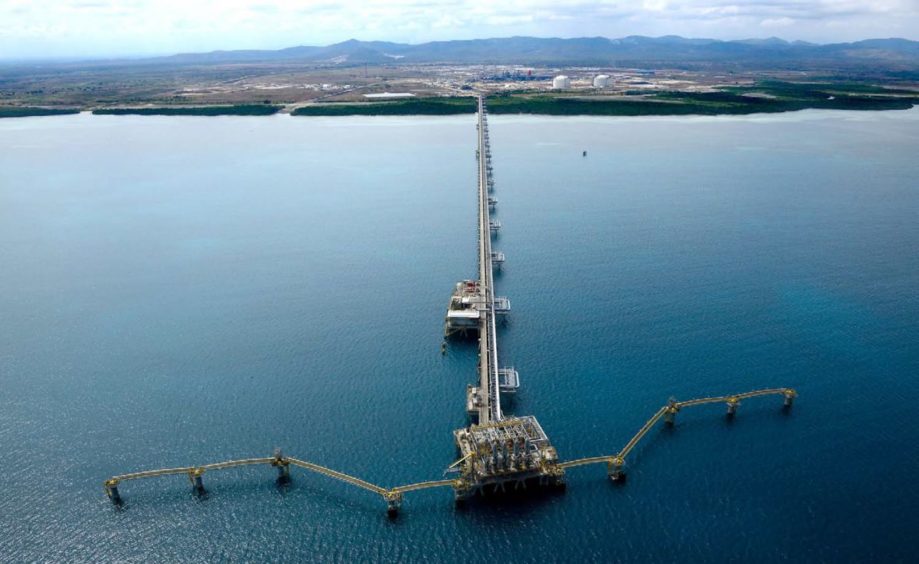
It was only in early February that Charles Roemer was talking up the prospects of his latest energy project: a natural gas plant that would capture and sell tons of carbon dioxide to oil producers when it got turned on in 2026.
The Louisiana project, part of larger proposed facility to produce liquefied natural gas, would not only be good for the environment, but “It’s also going to be very profitable,” said Roemer, chairman of a company called G2 Net-Zero LNG.
Today, those projections — roughly $50 million in revenue annually– need to be re-calibrated, another victim of the epic collapse in oil prices. Roemer is now leaning more on finding revenue from other byproducts, such as argon or nitrogen, to offset the reduced cash flow.
The oil turmoil marks yet another setback for the technology known as carbon capture, long heralded as the answer to cutting CO2 emissions from power plants. While its steep cost has kept it largely on the sidelines, the economics of carbon capture had been making more sense recently, thanks in part to U.S. tax incentives and CO2 sales to oil producers who use it to boost production. Roemer’s G2 project is one of two natural gas plants on the drawing boards that would be the first of its kind to try the technology on a large scale. But plunging crude prices have dimmed the promise for now that it will go mainstream.
“Power plants can’t be altruistic and invest in carbon capture because the power will cost too much,” said Mark Coalmer, a project director at OGCI Climate Investments, a fund set up by oil and gas companies that invests in clean technologies.
Overall, G2 expects the Louisiana plant to produce $1.4 billion in cash flow, mainly from LNG production. So the potential for lower revenue from selling CO2 wouldn’t amount to a big hit. “Sales of CO2 are certainly something we plan to take advantage of, but the fall in prices is nearly immaterial to our bottom line,” Roemer said.
But it bodes poorly for the broader effort to capture carbon. While the idea has been around for decades, very little carbon has been captured over the years. Last year’s global capture, about 35 million tons, was almost all from industrial plants that produce cement, according to the International Energy Agency. Power plants burning coal and gas, which account for 41% of all CO2 released into the atmosphere, captured nearly none of that.
Utilities in the U.S. and beyond say the technology could be crucial for meeting long-term environmental goals. While many of the largest power companies are pledging to eliminate their greenhouse-gas emissions over the next 30 years, technology to keep grids stable without coal or gas remains too costly. Without carbon capture or some other scientific breakthrough, utility chiefs have said pushing emissions cuts past 90% is a pipe dream.
Environmentalists have long been leery of carbon capture, saying it will encourage the use of more fossil fuels. One of the only ways developers have found to make it economical is by selling the CO2 to oil companies, which use it to juice production in existing reservoirs in a process known as enhanced oil recovery. That’s where the collapse of crude comes in, because the price of CO2 is driven largely by the price of oil.
Just a few weeks ago, when oil was trading at $60 a barrel, CO2 could be sold at $20 a metric ton. Now that oil has plunged to $25, the price of carbon dioxide may slump below $9, according to BloombergNEF. That means carbon-capture projects will struggle to offset their costs.
Moreover, companies such as Exxon Mobil Corp., Occidental Petroleum Corp. and Denbury Resources Inc., the biggest buyers of CO2, are likely to reduce oil production and so will require less of it.
“This could price many of the new CO2 suppliers out of the market or lead to losses for those with more expensive capture processes,” Ryan Anderson, a BloombergNEF analyst, said in a report.
And companies that haven’t yet launched carbon reduction plans “are likely to put the issue on the back burner,” said Valentina Kretzschmar, an analyst at energy-research firm Wood Mackenzie. Discretionary spending “will be under review — that includes additional budget allocated for carbon mitigation.”
All this comes at a pivotal time for people like Bill Brown, chief executive officer of NET Power and a former investment banker at Goldman Sachs Group Inc. He had patented a technology that burns gas with oxygen instead of nitrogen, a far less expensive way to separate the CO2, bringing the cost to $4 a ton from an average of $70 to $80.
Brown partnered with Roemer’s G2 Net-Zero company in a $8.7 billion project that aims to capture 4 million tons of CO2 a year to sell to oil companies, while producing liquefied natural gas. While Brown’s cheaper technology will help offset the blow from low oil prices, the plant’s finances won’t go unscathed.
Oil producers “will not be able to pay as much as it used to for CO2,” Brown said. “Some companies will not be able to make money with lower cost of CO2.”
Cash Flow
The changing economics are also likely to affect an early-stage carbon-capture project under development by California Resources Corp. at its Elk Hills natural-gas power plant. The goal, to turn Elk Hills into a carbon-neutral plant by selling CO2, could be delayed and become more costly if oil prices remain low, said Coalmer, whose OGCI Climate fund supplied financing.
If existing U.S. tax incentives aren’t enough to cushion the oil price drop, he said, “It could cause the financing to be more difficult.”
Recommended for you
